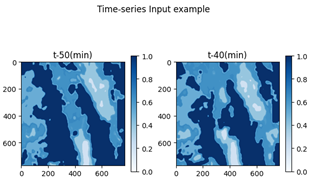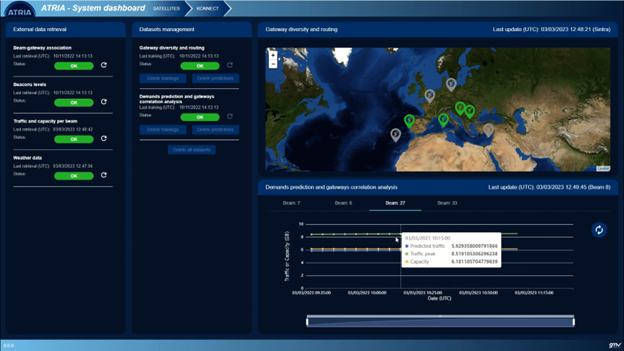As we already explained in another post (ATRIA, a.k.a. how Artificial Intelligence can Empower Satcom ground operations – ATRIA (atria-h2020.eu)) the main goal of ATRIA is the prototyping of a data-driven tool, called Artificial Intelligence – Packet Control Software (AI-PCS), which uses Artificial Intelligence and Machine Learning to extract information from data to autonomously identify the optimum configuration of the available resources for the on-demand service requests.
The two main uses cases that AI-PCS addressed in the first phase of ATRIA (months 1-18) were (i) the prediction of the beam traffic – and therefore of congestion phaenomenon – based on time-series analysis and (ii) the forecast of the attenuation in the signal due to weather conditions – which can help deciding in a timely manner if and when a gateway switch is needed – based on weather forecasts.
In the second phase of ATRIA, AI-PCS is addressing use cases related with (iii) anomaly detection in a telecommunication network, with particular focus on the ground segment and (iv) frequency plan and beam layout optimization in the new generation of Software-Defined Satellites.
A fundamental role in the training of Machine Learning is played by the data: the more the training dataset provided to the algorithm is comprehensive and coherent with the data it will receive in the execution phase is, the more likely it is to get an accurate and reliable output. This is the reason for which many Eutelsat/Skylogic data have been used to train and validate AI-PCS. Indeed, SKL/ETL provided access to the necessary data to train and validate the models subsequently integrated into AI-PCS. At runtime, AI-PCS is seamlessly connected to the Skylogic data-lake. This direct linkage ensures direct access to the relevant data which is then promptly fed into the AI model’s analysis and prediction algorithms.



